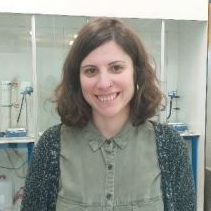Overcoming Challenges through Sustainable Polyurethane Based Strategies
A special issue of Polymers (ISSN 2073-4360). This special issue belongs to the section "Polymer Applications".
Deadline for manuscript submissions: closed (31 December 2022) | Viewed by 28195
Special Issue Editors
Interests: polyurethane chemistry; polyurethane dispersions; green chemistry; bio-based materials; renewable entities and additives; composite materials; polymers with tailored properties
Special Issues, Collections and Topics in MDPI journals
Interests: biobased products; natural functional ingredients and applications; nano and microencapsulation; polyurethane chemistry; hybrid and composite materials
Special Issues, Collections and Topics in MDPI journals
Special Issue Information
Dear Colleagues,
The need to develop innovative materials in order to satisfy increasingly complex requirements is promoting the emergence of new materials with tailored properties. We are on the right path, but we must keep moving forward! In this context, polyurethanes offer the needed versatility in terms of properties, application forms (e.g., foams or dispersions), and advanced manufacturing strategies, including 3D printing or electrospinning. Based on this, the design of approaches through sustainable strategies is gaining relevance considering environmental concerns, covering green synthesis routes and bio-based reagents, eco-friendly polyurethane-derived materials, preparation methodologies, and recycling pathways after materials’ lifespan. In addition to providing functionalities, the sustainability they provide in their preparation and during/after their lifespan should also be highlighted, helping to promote the circular economy of the systems.
Thus, this Special Issue aims to collect contributions in the field of polyurethane-based alternatives to conventional pathways, yielding reduced toxicity while holding a broad range of properties/functionalities. We welcome manuscripts on polyurethane-derived materials with renewable reinforcements (or additives) and/or (nano)entities incorporated by green pathways providing value-added functionalities. We encourage you to depict your alternative proposals to address the existing challenges in the framework of foams, dispersions, emulsions, hydrogels, or advanced manufacturing strategies.
Dr. Arantzazu Santamaria-Echart
Prof. Dr. Maria Filomena Barreiro
Guest Editors
Manuscript Submission Information
Manuscripts should be submitted online at www.mdpi.com by registering and logging in to this website. Once you are registered, click here to go to the submission form. Manuscripts can be submitted until the deadline. All submissions that pass pre-check are peer-reviewed. Accepted papers will be published continuously in the journal (as soon as accepted) and will be listed together on the special issue website. Research articles, review articles as well as short communications are invited. For planned papers, a title and short abstract (about 100 words) can be sent to the Editorial Office for announcement on this website.
Submitted manuscripts should not have been published previously, nor be under consideration for publication elsewhere (except conference proceedings papers). All manuscripts are thoroughly refereed through a single-blind peer-review process. A guide for authors and other relevant information for submission of manuscripts is available on the Instructions for Authors page. Polymers is an international peer-reviewed open access semimonthly journal published by MDPI.
Please visit the Instructions for Authors page before submitting a manuscript. The Article Processing Charge (APC) for publication in this open access journal is 2700 CHF (Swiss Francs). Submitted papers should be well formatted and use good English. Authors may use MDPI's English editing service prior to publication or during author revisions.
Keywords
- Bio-based polyurethanes
- Green synthesis strategies
- Sustainable preparation methodologies
- Polyurethane derived materials
- Application forms
- Foams
- Dispersions
- Hydrogels
- Advanced properties
- Recycling strategies







